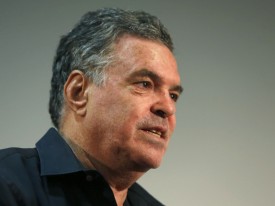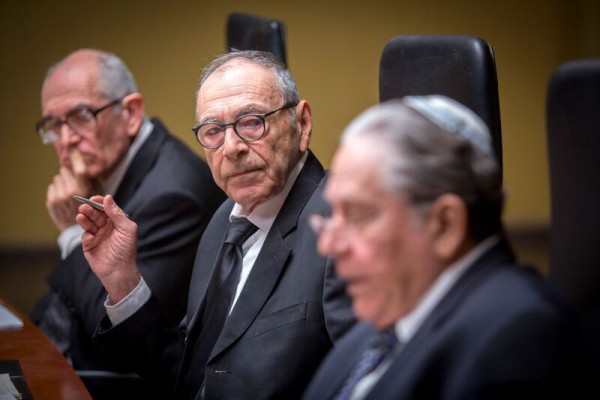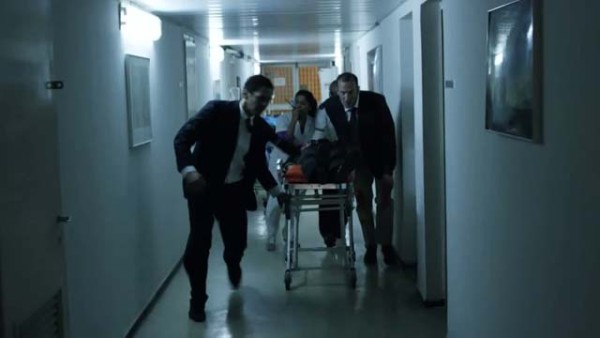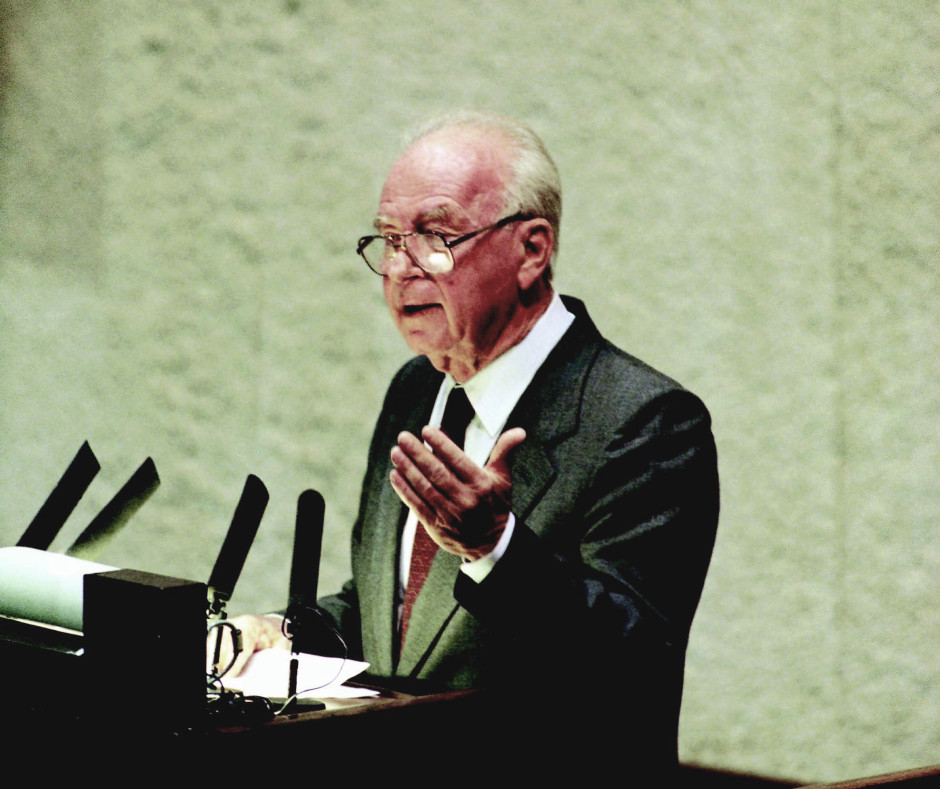Amos Gitai’s chilling docudrama, Rabin: The Last Day, which will be screened at the Toronto International Film Festival on September 16 and 18, is ostensibly about Yitzhak Rabin’s assassination on November 4, 1995. But on a deeper level, it’s about the politically charged, divisive and poisonous atmosphere that emboldened his assassin, Yigal Amir, to kill an Israeli prime minister who wanted to give peace a chance.

Gitai, who’s definitely a peacenik, sets the tone in the first few minutes with an interview featuring Shimon Peres, who was foreign minister in Rabin’s cabinet when the controversial 1993 Oslo accord was signed.
In Peres’ estimation, Rabin — the former chief of staff of the armed forces — was remorselessly demonized by right-wing opponents because he was prepared for territorial compromise with the Palestinians. Peres adds that sedition was in the air and that a civil war was possible during that fraught period in Israel’s history.
He concludes by saying that Israel could have achieved a measure of peace and stability had Rabin not been gunned down by Amir, a 26- year-old Bar-Ilan University student.
Gitai’s disturbing 153-minute film is a hybrid, composed of file footage, reenactments and interviews. It’s a potent mixture that keeps a viewer riveted, its length notwitstanding.

Rabin, who had said he felt “safe” among Israelis, was killed at a rally in Tel Aviv’s King’s Square after months of mounting political tension. Shot in the chest, stomach and spine, he was dead upon arrival at Ichilov Hospital. Nonetheless, a team of surgeons desperately tried to revive him. Rabin’s spokesman, Eitan Haber, announced his passing in the early hours of November 5, and the nation was plunged into mourning.
Rabin, however, was not mourned by the national religious camp, of which Amir was a member. “I sacrificed myself for the Jewish people,” says an actor portraying him.
In a series of vivid reenactments, Gitai makes the point that Orthodox Jews like Amir regarded Rabin as an enemy of the state, comparing him to a Nazi. Like-minded rabbis placed a religious curse on Rabin, effectively consigning him to punishment by death. Subsequently, several of these rabbis sent followers a letter explaining the rationale for their beliefs.
When a panel of three judges asked the attorney-general why he had failed to press criminal charges against them, he replied he could not do so on legal grounds because they had not circulated their letter publicly.

Recalling the climate of incitement that prevailed in Israel following the Oslo peace process, the film posts news clips of angry anti-government rallies during which protesters held aloft effigies of Rabin dressed as a Gestapo officer and chanted “Death to Rabin” and “Rabin traitor.”
Benjamin Netanyahu, the then opposition leader, addressed one of these demonstrations, promising to expand settlements in the West Bank should be be reelected prime minister. In yet another clip, he asserted that Rabin’s policies were leading Israel to destruction.
In one of the most compelling reenactments, a clinical psychologist aligned with the settlement movement offers a “diagnosis” of Rabin’s personality. Calling him “schizoid” and “schizophrenic,” she likens him to Hitler, claims he’s detached from reality and pronounces him unfit to run the country. As she finishes her rant, she virtually chokes on her hateful words.
A strikingly cogent moment in the film occurs when the issue of settlements in the occupied territories is finally broached. In a strong reenactment, the lawyer assisting the judges suggests that settlements are contrary to international law and that Israelis like Amir were profoundly influenced by them. Basically dismissing her argument, the judges refuse to take that consideration into account.
Probing deeper, Gitai examines two related issues that impinge on Rabin’s assassination.
He leaves us with the distinct impression that security at the Rabin peace rally was decidedly lax. First, there was no master plan to keep anti-Rabin agitators at a safe distance from the prime minister. Second, Amir — a zealot known to the intelligence services — managed to move perilously close to the platform on which Rabin stood as he urged Israelis to take calculated risks for the sake of peace.
Rabin’s driver claims he rushed a grievously wounded Rabin to the hospital — a distance of some 500 metres from King’s Square — in about a minute. In fact, it took the chauffeur a good eight minutes to ferry him there.

The discrepancy is important. Had Rabin arrived at the hospital as quickly as the driver claims, he might have survived.
Maybe, maybe not. We’ll never be certain. What is beyond doubt, as one of the judges aptly observes, is that Israel would never be the same again after Rabin’s murder.
